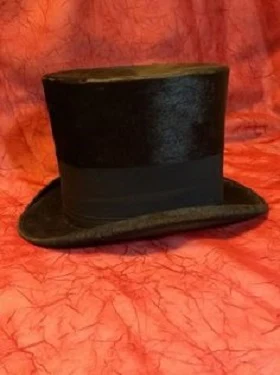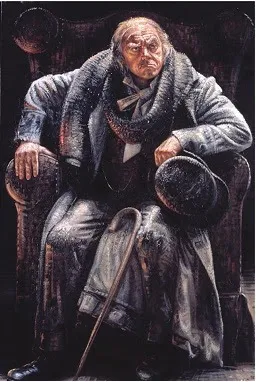
A website that offers the best free services in news, info, reference, and online tools with over 60,000 eBooks and audiobooks
Showing posts with label Dickens Charles. Show all posts
Showing posts with label Dickens Charles. Show all posts
Sunday, December 25, 2118
Tuesday, January 15, 2019
Oliver Twist By Charles Dickens
Set in the first half of the 19th century, the classic novel presents the story of young orphan Oliver Twist, who endures tumultuous events in a society burdened by poverty, crime and malice. After being poorly treated in a workhouse, Oliver escapes to London where instead of finding a better life he ends up tangled in a web of criminal activities.
The novel opens with the introduction of Oliver, a waif who has spent his short life living in miserable conditions in a workhouse. Along with other fellow orphans, he is regularly beaten and underfed. One day the young, hungry orphans decide to draw sticks in order to determine who will ask for another portion of gruel. The unlucky representative of the starving children is Oliver, who goes up to the stern Mr. Bumble and makes his famous plea “Please sir, I want some more”. Unimpressed by such a request, the authoritarian administrators of the workhouse offer five pounds to anyone willing to take the boy as an apprentice. Subsequently, Oliver is apprenticed to local undertaker, Mr. Sowerberry. |
Apart from creating a brilliant piece of literature, Dickens has also documented a significant time in social history. Exploring troubling issues of the time including child labor, treatment of orphans, and child recruitment into the criminal world, Oliver Twist is one of the earliest examples of a novel exploring social criticism.
Monday, January 14, 2019
David Copperfield By Charles Dickens
Charles Dickens is one of the most appreciated Victorian writers, his novels gaining worldwide recognition by both critics and readers. First published in 1850, David Copperfield begins with avid the tragedy of David's brother dying when David is just a boy. After this episode he is sent by his step-father to work in London for a wine merchant. When conditions worsen he decides to run away and embarks on a journey by foot from London to Dover. On his arrival he finds his eccentric aunt, Betsey Trotwood who becomes his new guardian.
|
Thursday, November 22, 2018
A Christmas Carol By Charles Dickens
“A squeezing, wrenching, grasping, biting, clutching, covetous old sinner” is hardly hero material, but this is exactly what makes A Christmas Carol by Charles Dickens such an unforgettable book and its hero, Ebenezer Scrooge such an extraordinarily enduring character.
In the book's celebrated opening scene, on the night before Christmas the old miser Ebenezer Scrooge sits in his freezing cold counting house, oblivious to the discomfort of his shivering young assistant Bob Cratchit. Scrooge is unremittingly rude to relatives and visitors alike who drop in to convey their Christmas greetings or ask for a contribution to charity. Scrooge returns to his equally chilly mansion where he has an extraordinary supernatural experience. The spirit of his dead partner, Marley appears recounting tales of eternal suffering that he is condemned to endure because of the mean and uncharitable deeds that Marley did when he was alive. Marley informs Scrooge that three other supernatural visitors will make their appearance over the next three nights. The rest of the book traces the events that happen when these three otherworldly beings visit Scrooge. |
A Christmas Carol's enduring appeal lies in its heart rending appeal to help those living in impoverished conditions. The highly sentimental and touching pictures of Christmas celebrated in homes where festivities cannot coexist with grinding poverty, told in typical Dickensian style, make it both a literary masterpiece and a plea for social reform. But all is not gloom and doom —there are brilliant flashes of humor, memorable characterization and a deep understanding of human nature. As with all Dickens' works, this one too is peculiarly suited to being read aloud, especially when the family gathers round a cozy fire on Christmas Eve!
Thursday, August 23, 2018
A Tale Of Two Cities By Charles Dickens
Its immortal opening lines, "It was
the best of times, it was the worst of times..." set the stage for a
sweeping narrative that combines drama, glory, honor, history, romance,
brutality, sacrifice and resurrection.
A Tale of Two Cities by Charles Dickens is one of the most
widely read and famous works of historical fiction in the English
language. Dickens had recently launched his magazine All the Year Round in 1859. In the same year, he began featuring A Tale of Two Cities
in 31 weekly installments in his new magazine. The book was eventually
combined into a single copy and split into three major sections as it is
presented today.
In this epic tale of love and tragedy set during the turbulent times of the French Revolution in 1789, the motif of two's appears constantly as opposing sides of the same coin. London and Paris are the two cities, Sidney Carton and Charles Darnay are the two heroes, Lucie Manette and Madame Defarge are the pure and evil women respectively, and these along with shadows and darkness, sacrifice and dishonor, brutality and spirituality form the recurring dual motifs in the novel. Sidney Carton, a young, debauched and dissolute English barrister defends a young French aristocrat Charles Darnay accused of treason in London. The two bear a striking resemblance to each other. Lucie Manette, a lovely young French girl and her father Dr. Manette, who had suffered under the atrocities of the nobility in France, now live a quiet life in London. Charles and Lucie are in love, but Sidney Carton also falls in love with her. Meanwhile in France, the storm of revolution is about to break. A wine store owner and Dr. Manette's former servant, Monsieur Defarge, leads the revolutionaries. His wife, Madame Defarge is a vicious woman who revels in cruelty. She too has suffered under the aristocratic regime and now seeks to destroy all those who persecuted her. Charles Darnay returns to Paris to rescue an old servant of his who has been captured by the revolutionaries. He is captured by the rebels and condemned to be executed by guillotine. The story then takes several dramatic twists and turns before reaching its final and most unexpected conclusion. As one of the most exciting and deeply moving stories penned by a brilliant and gifted story teller, A Tale of Two Cities is indeed a riveting and unforgettable experience for readers of all ages. |
Sunday, August 19, 2018
Great Expectations By Charles Dickens
From the opening passage itself of Great Expectations
by Charles Dickens, the reader is drawn into the world of the hero,
Pip, who is at that time, seven years old. The author creates an
unforgettable atmosphere: the gloom of the graveyard, the melancholy of
the orphan boy, the mists rising over the marshes and the terrifying
appearance of an escaped convict in chains.
Told in first person (one of the only two books that Dickens used this form for, the other being David Copperfield) Great Expectations
is a classic coming of age novel, in which we trace the growth and
evolution of Pip or Philip Pirrip to give his full name. Pip has lost
his parents very early in life and is being brought up by his much older
sister and brother-in-law Joe Gargery. His sister is a dominating and
shrewish woman, while Joe is an affectionate man. Joe's uncle Mr
Pumblechook (another of Dickens' delightfully evocative names) asks Joe
to send Pip to the stately mansion Statis House ostensibly to play with
the owner Miss Havisham's adopted daughter Estella. This marks the
beginning of a life-changing experience for Pip.
Miss Havisham is a wealthy eccentric whose twisted agenda is that of
taking revenge on the man who jilted her at the altar. Pip is
unwittingly drawn into her malevolent schemes. When Pip grows older,
Miss Havisham's lawyer Mr Jaggers informs Pip that he has come into a
large fortune from an unknown benefactor and that he must move to London
and learn to become a “gentleman.” What follows is a strange and
labyrinthine tale of Pip's journey into adulthood.
Dickens' wonderful gift for characterization peoples the book with a
host of memorable characters and sub-plots. The novel also explores the
fears and anxieties of childhood and traces Pip's moral and emotional
development and his ambitions as he matures. Estella as the warped
creation of a vengeful mind has her own route to traverse.
Great Expectations finds Charles Dickens at the peak of his
creative powers. The Victorian preoccupation with wealth and social
ambition, personal ambition, class distinctions, crime and punishment
and how they looked at education and self improvement as a means to rise
in society are all vividly portrayed here. There are some delightfully
humorous passages throughout the book which add to its flavor and
authenticity. As with most of Dickens' work, this is a book to be
savored by young and old alike and preferably to be read aloud, as
Dickens himself did in his wildly popular public readings.
From the opening passage itself of Great Expectations by
Charles Dickens, the reader is drawn into the world of the hero, Pip,
who is at that time, seven years old. The author creates an
unforgettable atmosphere: the gloom of the graveyard, the melancholy of
the orphan boy, the mists rising over the marshes and the terrifying
appearance of an escaped convict in chains.
Told in first person (one of the only two books that Dickens used this form for, the other being David Copperfield) Great Expectations is a classic coming of age novel, in which we trace the growth and evolution of Pip or Philip Pirrip to give his full name. Pip has lost his parents very early in life and is being brought up by his much older sister and brother-in-law Joe Gargery. His sister is a dominating and shrewish woman, while Joe is an affectionate man. Joe's uncle Mr Pumblechook (another of Dickens' delightfully evocative names) asks Joe to send Pip to the stately mansion Statis House ostensibly to play with the owner Miss Havisham's adopted daughter Estella. This marks the beginning of a life-changing experience for Pip. Miss Havisham is a wealthy eccentric whose twisted agenda is that of taking revenge on the man who jilted her at the altar. Pip is unwittingly drawn into her malevolent schemes. When Pip grows older, Miss Havisham's lawyer Mr Jaggers informs Pip that he has come into a large fortune from an unknown benefactor and that he must move to London and learn to become a “gentleman.” What follows is a strange and labyrinthine tale of Pip's journey into adulthood. Dickens' wonderful gift for characterization peoples the book with a host of memorable characters and sub-plots. The novel also explores the fears and anxieties of childhood and traces Pip's moral and emotional development and his ambitions as he matures. Estella as the warped creation of a vengeful mind has her own route to traverse. Great Expectations finds Charles Dickens at the peak of his creative powers. The Victorian preoccupation with wealth and social ambition, personal ambition, class distinctions, crime and punishment and how they looked at education and self improvement as a means to rise in society are all vividly portrayed here. There are some delightfully humorous passages throughout the book which add to its flavor and authenticity. As with most of Dickens' work, this is a book to be savored by young and old alike and preferably to be read aloud, as Dickens himself did in his wildly popular public readings. |
Subscribe to:
Comments (Atom)




